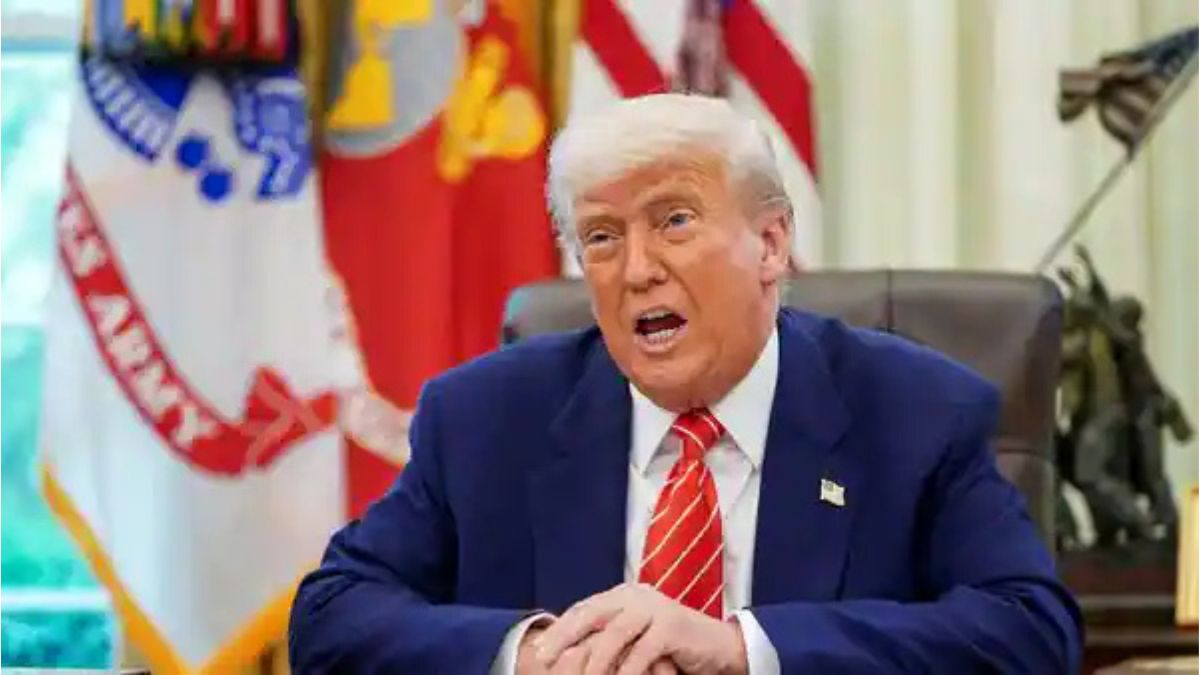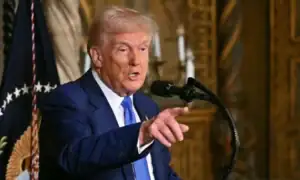In a dramatic move that’s shaking up global markets, President Donald Trump has once again intensified his “America First” trade agenda by doubling tariffs on imported steel and aluminum from 25% to 50%. The announcement was made during a fiery speech at a U.S. Steel plant in Pennsylvania on June 4, 2025, where Trump promised to “end the era of economic surrender.”
This latest action marks one of the most aggressive trade policy shifts of his current presidency, with direct implications for international partners, U.S. manufacturers, and American consumers.
A Rally Cry for U.S. Industry
Standing before steelworkers and media cameras, President Trump declared that American jobs were under attack from foreign nations “dumping cheap metals” into the U.S. market.
“We’re not going to let countries flood our market with junk anymore,” Trump proclaimed. “The 25% tariff helped, but it wasn’t enough. Now we go stronger—50%—to make America’s industries unbeatable again.”
According to the administration, the increase is designed to strengthen U.S. manufacturers, ensure fair trade, and promote national economic security.
Read More: WAPDA Electricity Unit Price in Pakistan (Updated 2025)
Global Response: Allies Push Back
Trump’s tariff decision immediately sparked concern among top U.S. trading partners:
- Canada, America’s largest supplier of steel and aluminum, called the action “damaging to both economies.” Canadian officials confirmed urgent negotiations were underway to seek tariff relief.
- Mexico responded with frustration. Economy Minister Marcelo Ebrard warned of “serious economic strain” and threatened to explore countermeasures if talks failed.
- The European Union condemned the move, calling it a violation of global trade norms and signaling potential retaliatory tariffs on U.S. exports.
The White House, however, remains firm. “The President is focused on defending American industries,” a senior official said. “No exceptions. No compromises.”
What It Means for the U.S. Economy
While the intention is to boost American manufacturing, the ripple effects could be more complex:
- Rising Costs: Industries that depend on steel and aluminum—like car manufacturers, aerospace companies, and food packaging firms—are bracing for higher material costs.
- Inflation Alert: Economists warn that the move could fuel inflation as businesses pass increased costs to consumers.
- Supply Chain Disruptions: With foreign suppliers now facing steep entry costs, many companies may scramble to find alternative sources or reduce production.
Ironically, while the policy is designed to protect American jobs, analysts say it may backfire for smaller manufacturers who can’t absorb the cost hikes.
Political and Legal Backdrop
Legally, the tariffs fall under national security provisions—a strategy Trump has used before. Although a recent court ruling questioned this authority, enforcement has been paused pending appeal.
Politically, the move is a clear signal ahead of the 2025 midterms. Trump is appealing directly to blue-collar workers and industrial states like Pennsylvania, Michigan, and Ohio—critical regions for Republican support.
Read More: Top 10 Makeup Brands in Pakistan You Need to Know About
“This is not just policy—it’s politics with a purpose,” says political analyst Dana Kelly. “Trump knows his base, and he’s delivering a message they want to hear: protection, pride, and prosperity.”
Wall Street’s Calm — For Now
Surprisingly, the markets haven’t panicked. The S&P 500 remains near record highs, bolstered by strong tech earnings and investor faith in the broader U.S. economy.
Still, traders are watching closely. If trade tensions escalate into a full-blown tariff war, the consequences could extend beyond metals—impacting everything from agriculture to electronics.
A High-Stakes Gamble
President Trump’s tariff doubling is more than a policy shift—it’s a powerful message. To his supporters, it’s a long-overdue correction in favor of American workers. To critics, it’s a reckless gamble with global consequences.
What’s clear is this: the world is watching. With global trade dynamics shifting fast, and foreign governments considering retaliation, the coming weeks could define the direction of U.S. economic policy for years to come. Stay updated with Bloom Pakistan
Will this bold move revive American industry—or ignite a new round of trade wars?
Only time—and negotiation—will tell.
Read More: Major Development Projects by Nawaz Sharif: A Comprehensive Overview









